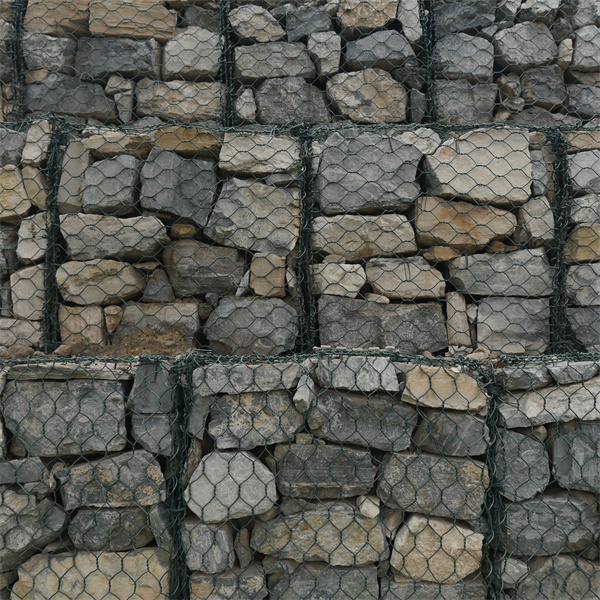Sep . 04, 2024 03:46 Back to list
terraced gabion wall factory
Terraced Gabion Walls A Sustainable Solution for Landscape Engineering
In recent years, the demand for sustainable and visually appealing landscaping solutions has risen dramatically. One such innovative approach is the use of terraced gabion walls, which are not only functional but also enhance the aesthetic value of the landscape. These structures, composed of wire cages filled with stones or other materials, provide a stable and environmentally friendly option for managing soil erosion and creating terraced gardens.
What Are Gabion Walls?
Gabion walls are traditionally used in civil engineering to control erosion, stabilize slopes, and manage water drainage. They consist of rectangular wire baskets filled with rocks, concrete, or other materials. The flexibility of the wire mesh allows gabions to effectively adapt to shifting soil and water, making them an ideal choice for areas with steep gradients or unstable earth. When arranged in terraces, these walls can transform rugged terrain into manageable and attractive landscapes, increasing the usability of space while preventing soil loss.
Benefits of Terraced Gabion Walls
1. Erosion Control The primary function of terraced gabion walls is to prevent soil erosion. By creating horizontal steps in the landscape, they reduce the speed of water runoff, allowing for better absorption and minimizing erosion risks. This is particularly beneficial in areas prone to heavy rainfall or on steep slopes.
2. Aesthetic Appeal The visual impact of gabion walls is significant. When filled with naturally colored stones or reclaimed materials, they can blend seamlessly into the surrounding environment. Additionally, the terraced design allows for the incorporation of various plants and flowers at different levels, creating a stunning multi-tiered garden.
3. Environmental Sustainability Gabion walls are an eco-friendly option, as they utilize natural materials that are often locally sourced. This reduces the carbon footprint associated with transportation while promoting biodiversity by creating habitats for various species within the structures.
terraced gabion wall factory

4. Cost-Effectiveness Compared to traditional retaining walls made from concrete or timber, gabion walls can be more cost-effective. The materials used for filling can be sourced locally, and the installation process is relatively simple, often requiring less labor and time.
5. Drainage Solutions The open structure of gabion walls allows water to flow through, mitigating pressure build-up and reducing the risk of flooding. This permeability is essential for areas with high rainfall, as it helps to manage stormwater effectively.
The Manufacturing Process of Gabion Walls
The production of terraced gabion walls begins at specialized factories where the wire mesh is manufactured in various sizes and strengths. High-quality steel is often used to ensure durability and resistance to corrosion. Once the wire baskets are created, the filling materials, which can include rocks, concrete, or recycled materials, are carefully selected based on the project's requirements.
After manufacturing, the gabion walls can be transported to the site, where they are assembled in layers to create the terraced effect. Proper installation techniques are crucial to ensure stability and longevity. A well-designed terraced gabion wall not only enhances the landscape but also reinforces the ecological balance of the area.
Conclusion
Terraced gabion walls represent a harmonious blend of functionality and aesthetics in landscape engineering. Their ability to provide erosion control, promote sustainability, and enhance the visual appeal of gardens makes them a preferred choice for many landscape architects and homeowners alike. As communities continue to prioritize environmentally friendly practices, the use of terraced gabion walls is likely to grow, paving the way for more resilient and beautiful landscapes in the future.
-
Visualizing Gabion 3D Integration in Urban Landscapes with Rendering
NewsJul.23,2025
-
The Design and Sustainability of Gabion Wire Mesh Panels
NewsJul.23,2025
-
The Acoustic Performance of Gabion Sound Barriers in Urban Environments
NewsJul.23,2025
-
Mastering the Installation of Galvanized Gabion Structures
NewsJul.23,2025
-
Gabion Boxes: Pioneering Sustainable Infrastructure Across the Globe
NewsJul.23,2025
-
Custom PVC Coated Gabion Boxes for Aesthetic Excellence
NewsJul.23,2025
-
Installation Tips for Gabion Wire Baskets in Erosion Control Projects
NewsJul.21,2025






